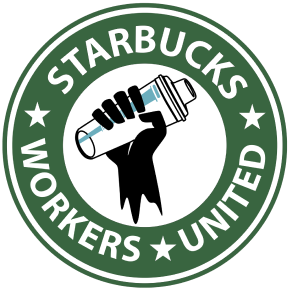The Wisconsin Uprising—a militant, populist uprising in response to legislation intended to crush unions and slash social services—lasted for months and spread from the initial occupation of the capitol to cities and towns across the state. There were ongoing protests of up to 200,000 people at the capitol building as well as rallies, protests, marches, and direct actions across Wisconsin. It has been the most profound, moving experience of my life. It showed me that, despite the beauties of the Uprising, protest alone often isn’t enough and that striking is our most effective tool for winning when the stakes are high.
At the time, I was a co-president for the Milwaukee Graduate Assistants Association (MGAA), the union for graduate workers at University of Wisconsin-Milwaukee. In addition to regularly busing our members to the capitol and organizing actions there and in Milwaukee, MGAA conducted a strike assessment and determined that our membership would be willing to strike if another union in the state would do the same.
First, we held membership meetings during which everyone freely expressed their concerns—the voices in favor of taking action expressed that the outcome of not striking was an even more fearful scenario than the risks brought on by a strike. Leadership emphasized that there is both power and safety in numbers, and when your numbers are large enough, the risks of taking “unlawful” strikes are diminished.
We recruited volunteers to participate in a phone bank, which called members in our 1,000 to 2,000-person bargaining unit who didn’t attend meetings. During those calls, we explained that our ability to maintain our union was at stake. We made clear that Republicans wanted to destroy unions because unions are a check on the elite’s ability to accumulate wealth, and unions tend to support politically left candidates.
We explained that this assessment was based on plans drawn up by a right-wing think tank and that Wisconsin was a testing grounds for these plans, which were ultimately intended to further consolidate power nationally in the hands of oligarchs.
At the end of these conversations, we asked if the worker would be willing to participate in a strike if there was majority interest. We then tracked the “yes” and “no” responses in spreadsheets and were able to determine that a majority did appear willing. We also tracked which departments and worksites our “yes” responses were concentrated in. To our knowledge, no other union undertook a full-scale assessment, or the results of the Uprising might have been different.
Because we were invested in seeing a general strike, our leaders talked to fellow leaders and rank-and-file members of other unions, asking them to consider striking. The leaders we spoke with never conducted official assessments and often told us that their members wouldn’t be willing to strike. We were never sure of the accuracy of those statements, given how willing people obviously were to take action in general, and given that agitation is an important part of any strike assessment. While doing an assessment, you explain what’s at stake, the risks of taking action and the risks of not taking action, and why you think the action you’re considering is the best, or possibly only, mean to achieving your goals. You provide people with a vision in which you can win. Then you ask the worker if they’d be willing to participate. We learned much later that there were other activists who were also trying to foment a general strike, but we hadn’t been in conversation with them at the time. If we had known about each other’s efforts and been able to discuss our plans together, it could have helped build a general strike movement.
If we had been able to plan with like-minded folks across the state, and if other unions had conducted strike assessments, perhaps the Uprising wouldn’t have been co-opted by Democratic politicians and eventually petered out. As it was, without the tool of striking, the people didn’t have a means to escalate their massive collective action and their smaller regional actions. When the Democrats left the state in order to try and prevent a vote from going through, people looked to them as heroes and waited for a future maneuver from them that never materialized because legislative options are inherently limited.
Our union staged numerous direct actions throughout the duration of the Uprising, hoping that our efforts, combined with those of workers around the state, would keep up the pressure on politicians and the wealthy. The Uprising was an inspiring show of unity and collective action, however, it lacked coordination, and without the strike, it never had the means to sufficiently disrupt the financial bottom line, which is the one tool we know to be effective at moving the wealthy and the politicians who represent them.




